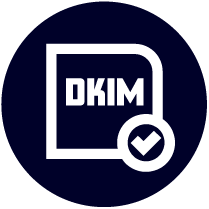Utilizza il nostro strumento gratuito per convalidare il tuo record BIMI in pochi secondi
Brand Indicators for Message Identification (BIMI) è una specifica emergente per l'email che consente alle organizzazioni di associare un logo controllato dal marchio a un dominio di posta elettronica e di farlo apparire sui client di posta elettronica compatibili. BIMI aggiunge un importante elemento di fiducia a questi loghi e mantiene il controllo sui marchi.
Man mano che il logo legittimo del tuo marchio diventa più riconoscibile e affidabile tra il tuo pubblico, il coinvolgimento via email può aumentare di pari passo con la diminuzione della probabilità di attacchi trasmessi via email come il phishing o la compromissione delle email aziendali (BEC). L'obiettivo finale è quello di aumentare la sicurezza e la fiducia di un ecosistema di posta elettronica aperto e basato su standard, sfruttando l'adozione del DMARC a livello globale.
Risultati BIMI per il dominio:
Vuoi ricevere i risultati via email?
Congratulazioni!
Il tuo modulo è stato inviato.







